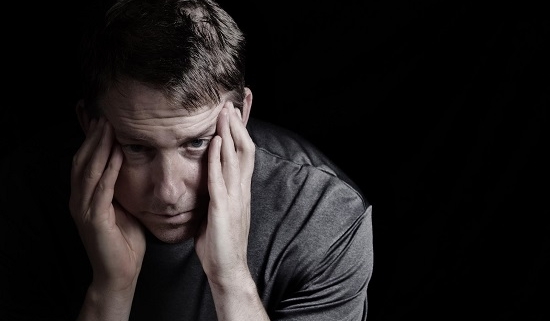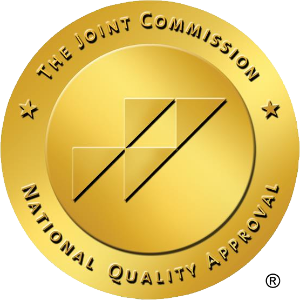When a loved one begins to display the classic signs of opiate addiction it can catch you completely off guard. In many instances, these powerful drugs, including pharmaceutical analgesics, may have been prescribed to the person following a surgical procedure or an injury for the purpose of managing pain while healing. Addiction can happen quickly, even in as little as two weeks time.
Opiate addiction crushes the spirit. Overcoming an opiate dependency may seem impossible while in active addiction, its grip is that powerful. The body literally demands constant replenishment of the drug just to be able to get through the day without horrible withdrawal symptoms surfacing. The reality is that individuals who find themselves trapped in the clutches of opiate addiction or dependency cannot escape without the help of trained addiction specialists who will equip them with the tools to overcome it.
Unwinding the brain’s dependence on opiates takes time, requiring patience and an abundance of personal commitment. But with a positive attitude along with an effective opioid addiction recovery program to guide you through, you can once again enjoy a life filled with hope and promise.
Experiencing the classic signs of opiate addiction has led you to make this important commitment to recovery. Take some of the anxiety out of the equation by gaining a general understanding of the opiate rehab process, as it will help to prepare you for what to expect in treatment and beyond.
Understanding Opiates
Opiates are drugs that are derived from the opium poppy. These medications or drugs may have a natural composition (such as opium, morphine, and codeine), or a synthetic composition (prescription opioids, such as hydrocodone, oxycodone, methadone, fentanyl, and meperidine) and heroin. For the purposes of this blog, the term opiate will encompass both categories.
The fact is that the majority of patients who are prescribed opiates after surgery or injury do not become dependent on the drugs. These patients adhered to the prescribed dosing for a set period of time and then stopped taking the medications with no ill effects. For others, however, opiate addiction can happen surprisingly fast. Opiates impact the dopamine pathways of the brain, the neurotransmitter that regulates the brain’s reward and pleasure responses, causing the brain to remember the pleasurable feeling and the desire to repeat it. When tolerance to the drug’s effects increases, so does the amount of opiates being consumed. Over time, addiction or chemical dependence develops.
In some cases, individuals who have become chemically dependent on prescription opioids will eventually seek out heroin as a cheap, more readily accessible replacement. Heroin is more potent than the prescription drugs, and runs the risk of being cut with fentanyl, an opioid that is 50 times more potent than morphine.
In the last 6 years there has been a rapid increase in overdose deaths related to opiates and prescription opioids, with fentanyl currently associated with the most recent spike in deaths. In 2016 alone, a total of 35,000 Americans lives were lost due to opioid overdose, including heroin, fentanyl and prescription analgesics, according to statistics reported by the National Institute on Drug Abuse.
While much of the recent opioid epidemic can be traced to the irresponsible actions of corrupt doctors and pharmaceutical companies, these statistics also include those individuals who sought a recreational high through opiate abuse. This misuse often involves combining multiple substances, such as alcohol or benzodiazepines, to enhance the effects of the opiate, which can be fatal.
How Opiates Impact the Brain
The exact reason why one patient will not become addicted to opiates and another will is still unknown. Science has not yet identified which differences in brain chemistry or genetics may predispose an individual to addiction. It is believed that the brain modifies neural pathways in the reward center, leading to intense cravings for the drug, allowing the grip of addiction to take hold.
In 1972 it was discovered that the brain has receptor sites for opiates like morphine, opium, and heroin. When an opiate binds to these receptors they can modify the body’s pain perception while also increasing levels of dopamine, resulting in elevated mood. Opiates can cause the brain to release a flood of dopamine into the body—up to ten times the normal levels of dopamine produced by the brain. The brain pathways are then altered, and it eventually ceases producing dopamine, as the opiate now produces the chemical.
When an individual consistently uses opiates the constant high levels of dopamine surging through the body will eventually increase tolerance to the drug. The user begins to need more and more of the opiate just to feel somewhat normal. Once chemical dependence has taken root, attempts to stop using the opiate will result in the onset of highly uncomfortable withdrawal symptoms.
With extended use, opiate addiction can cause impaired reasoning skills, poor problem-solving skills, impaired memory, and difficulty regulating behavior. Physical consequences of long-term opiate addiction can include liver disease, heart problems, collapsed veins, blood pressure problems, and significant weight loss.
What Are the Classic Signs of Opiate Addiction?
As with all drug and alcohol abuse, the signs and symptoms associated with opiate addiction may be undetectable, but will gradually become more defined as the addiction deepens. Understanding the signs of opiate addiction is the first step in getting help for yourself or a loved one. Signs and symptoms of an opiate addiction include:
Physical Signs
- Sleep disorders. Opiates can regularly cause insomnia.
- Decreased appetite. Opiate addicts are often underweight
- Drowsiness and lack of energy. The individual may seem to be on the verge of falling asleep, known as “nodding off
- Constipation. Opiates are renown for causing chronic constipation
- Tiny pupils. Constricted pupils, or pin-dot pupils, is caused by the constriction of blood vessels
- High blood pressure
- Hyper-arousal, hyper-vigilance
- Reduced respiration
- Increased heart rate
Behavioral Signs
- Repeated refills of prescription
- Increased tolerance, leading to higher or more frequent dosing
- Doctor shopping
- Stealing opioids from friends or family members’ medicine cabinets
- Stealing money to buy opiates
- Hanging out with a different group of friends
- Skips activities. The individual may stop participating in activities or events he or she once enjoyed.
- Lack of motivation
- Decline in academic or work performance. A sudden dip in grades or productivity at work
- Sneaky behavior. Increased demand for privacy and isolating behaviors
Psychological Signs
- Euphoria. Burst of energy and a joyful mood while high.
- Increased irritability
- Confusion
- Mood swings
- Anxiety
- Nervousness
- Psychosis
- Unable to quit the opiate without experiencing withdrawals
Co-Occurring Mental Health Disorders
Many of those with an opiate addiction also present with a co-occurring mental health disorder. This is called a dual diagnosis, and if present should be managed through a rehab that specializes in dual diagnosis. A dual diagnosis results in each of the disorders being exacerbated by the other. The addiction causes more intense mental health symptoms, and the mental health disorder leads to increased drug use. These specialty programs will address both disorders concurrently, which results in a better recovery outcome when compared with treating one disorder and then the other.
Common co-occurring mental health disorders with opiate addiction include:
- Depression
- Dysthymia
- Anxiety
- Post-traumatic stress disorder
- Antisocial personality disorder
Signs of Opiate Overdose
Nearly 48,000 deaths in 2017 alone were attributed to opiate overdoses, according to statistics reported by the Centers for Disease Control. Opiates work directly on the central nervous system, reducing heart rate and respiratory rate and depriving the brain of oxygen. Overdose can occur in these scenarios:
- Taking excessive dose of drug
- Relapsing after a period of sustained abstinence
- Combining opiate with alcohol or sedatives
- Obtaining an opiate tainted with fentanyl or other analog
The symptoms of an opiate overdose include repressed breathing, slowed heart rate, frequent vomiting, pinpoint pupils, bluish lips or fingertips, clammy skin, mental confusion, respiratory arrest, loss of consciousness, coma, death.
Treatment for Opiate Addiction
Medical detox
Before addiction treatment begins the body must be cleared of all opiates in the system. Detox allows for this important first step, helping the individual to stabilize and become more mentally alert so they can participate in the treatment phase of the opiate rehab process. Detox takes about a week to complete, with the most intense symptoms peaking between 48-72 hours. Opiate withdrawal symptoms include:
- Joint and muscle pain
- Nausea, vomiting
- Stomach cramping
- Goosebumps, chills
- Diarrhea
- Insomnia
- Fever
- Agitation
- Intense drug cravings
- Suicidal thoughts
- Seizures
- Coma
A supervised detox is the safest, most effective way to proceed with this critical phase. Supervised detox provides monitoring of vitals, as well as prescribing medications to help minimize the unpleasant withdrawal symptoms. In addition to over-the-counter medications to help alleviate the diarrhea, nausea, and body aches, Suboxone can help reduce cravings as well as the withdrawal symptoms.
Opiate addiction recovery program
Treatment for the opiate addiction can be procured at either an outpatient or inpatient rehab facility. Inpatient treatment offers the best chances of a successful long-term result for opiate addiction recovery.
The treatment phase of recovery involves daily therapeutic activities that include:
- Individual therapy sessions: one-on-one talk therapy with a psychotherapist
- Group therapy sessions: small groups with peers also in the treatment program
- Addiction education classes: teach about the neurobiology of addiction
- Family therapy sessions: support resources for the family members
- Relapse prevention planning: identify triggers and plan relapse prevention strategies
- 12-step or non 12-step recovery meetings: these offer social support and accountability
- MAT: medical support that helps reduce cravings and relapse risk
- Recreational activities and holistic therapies: activities that augment the effects of the conventional evidence-based therapy
As the individual begins to feel better physically the will become more engaged in the different therapies, which will benefit them emotionally, physically, and spiritually during the treatment process.
Aftercare
Continuing care refers to the post-rehab services or activities that can help bolster recovery, especially during the first 12 months of recovery when clients are most vulnerable to relapse. Continuing care might include sober living housing for a few months, continuing on with weekly outpatient therapy, and attending 12-step meetings. All of these activities will help to reinforce early recovery while providing key sources of support.
Medication-Assisted Treatment for Opiate Addiction Recovery
A growing body of scientific evidence supports the belief that some individuals will benefit from medication-assisted treatment (MAT) during early opiate addiction recovery. Drugs, such as Vivitrol, Suboxone, or methadone can be prescribed as step-down opioids that can help stabilize the individual as they become accustomed to live without heroin. The drugs are regulated by a physician and may be tapered off by the one-year mark of recovery in many cases.
The drugs work by primarily training the opioid addict to no longer desire the drug by blocking the opioid receptors in the brain. If they no longer experience the high associated with the drug they will, over time, lose the cravings for it. After a few months, the client enters a tapering schedule to slowly decrease the brain’s dependency on it.
Recovery from an opiate addiction occurs on a continuum that begins with that early decision to obtain professional help. Whether this decision was arrived at after hitting rock bottom, or by being encouraged by loved ones in a proactive intervention isn’t important. What matters is that the decision to get clean was made, and the recovery journey can absolutely save your or a loved one’s life. So, take that first step. Acknowledge the classic signs of opiate addiction and get the help you need, and deserve, to live your very best life.
Next Level Recovery Offers Comprehensive Treatment for Opiate Addiction
Next Level Recovery is a multi-disciplinary addiction recovery center in Salt Lake City, Utah. The highly accomplished clinical team at Next Level Recovery understands the classic signs of opiate addiction, as well as how to help an individual overcome this serious disease. Using a blend of evidence-based therapies and MAT, the dedicated therapists and recovery specialists provide a solid and effective roadmap out of addiction. For more information about the program, please contact Next Level Recovery today at (888) 759-5846.






